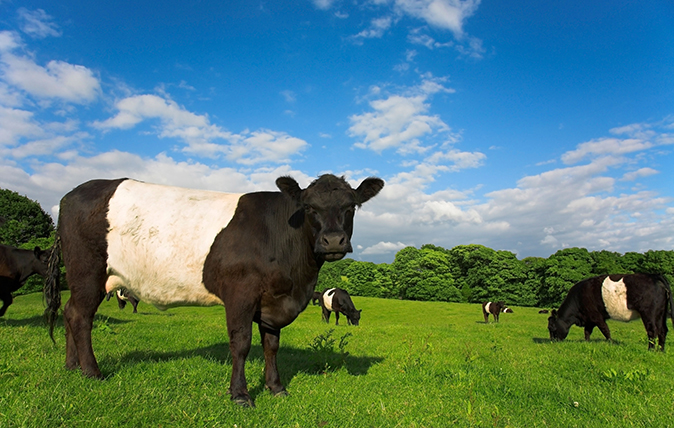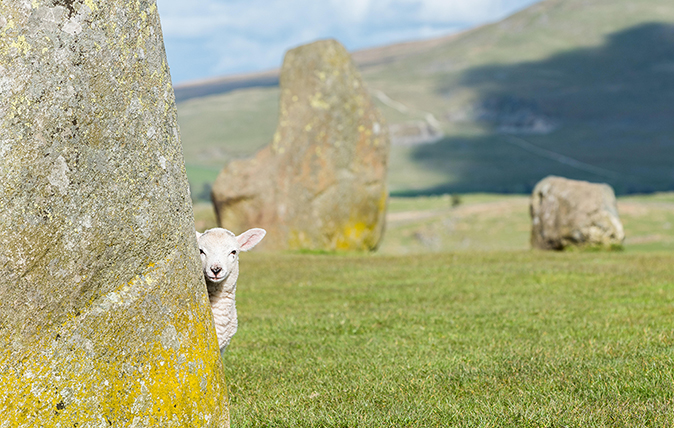The iconic English pig that is now at serious risk of disappearing forever
The latest Rare Breeds Survival Trust report brings shocking news: the Large White pig, a mainstay of British farms, is at serious risk. Annunciata Elwes reports.


Pig farming has been through torrid times of late and now comes news that a pivotal breed in its commercial history is declining suddenly and sharply. The Large White — widely known as the ‘Yorkshire Pig’ — has plummeted since 2000 to what the Rare Breeds Survival Trust (RBST) describes as an ‘effective population’ of only 125. This reduces genetic diversity, which is crucial for combating animal disease, as well as the relative numbers of sires and dams. Last year, the British Pig Association recorded only 66 boars — once, they made up 76% of the total male pig population.
The breed has largely been a victim of its own success, used widely in the development of the hybrid pig by crossing it with the Landrace instead of continuing with pedigree breeding: almost any joint in the supermarket will contain Large White in its genetic make-up. The result is that the breed is now categorised as being of the highest conservation concern, moving from ‘At risk’ to ‘Priority’ on the RBST Watchlist, released this week. ‘The pig industry has had an awful year and the situation for native pigs is very concerning. With the decline in Large Whites, seven of our 11 native pig breeds are now Priority,’ observes RBST chief executive Christopher Price.

The Norfolk Horn sheep, one of the oldest heritage breeds and historically an important part of the East Anglian economy, is also in trouble, as is the Gloucester cow, which has limited geographic reach, and the Hackney horse, which is perhaps perceived as being from a different age. However, Mr Price points out: ‘Many of our rare native breeds are holding a stable position thanks to the fantastic efforts of RBST members. In changing commercial conditions and as environmental sustainability comes to the fore of agricultural policy, native breeds are increasingly attractive for farming and land management.’
Breeds such as the English goat, Lincoln Longwool sheep, Middle White pig and Vaynol cattle are all improving and it is to be hoped that the return of agricultural shows this summer will showcase Britain’s diversity of hardy native breeds and their usefulness in regenerative farming. However, no breed has improved enough to move off the Watchlist this year.
Native breeds at serious risk:
- Hackney horse and pony
- Large White pigs
- Norfolk Horn sheep
- Gloucester cattle
Other native breeds on the RBST watchlist:
- English, Old English, Bagot and Golden Guernsey goats
- Lincoln Longwool sheep
- Vaynol and Albion cattle
- Exmoor and Dartmoor ponies

Credit: ©Fiona Osbaldstone
Exquisite houses, the beauty of Nature, and how to get the most from your life, straight to your inbox.
Want to keep chickens? Here are 22 unusual breeds that'll give you a bustling coop — and maybe some pink eggs for breakfast
Lockdown has made the idea of keeping hens — and harvesting their eggs — even more appealing, but the populations

A guide to the native cattle breeds of Britain, from Aberdeen Angus to Jerseys
How many of these native cattle breeds would you recognise from travelling through the British countryside or from the butcher’s

Shaggy sheep stories: 21 native British sheep breeds and how to recognise them
Here are just some of the breeds to consider, whether for field or table or both.
Annunciata is director of contemporary art gallery TIN MAN ART and an award-winning journalist specialising in art, culture and property. Previously, she was Country Life’s News & Property Editor. Before that, she worked at The Sunday Times Travel Magazine, researched for a historical biographer and co-founded a literary, art and music festival in Oxfordshire. Lancashire-born, she lives in Hampshire with a husband, two daughters and a mischievous pug.
